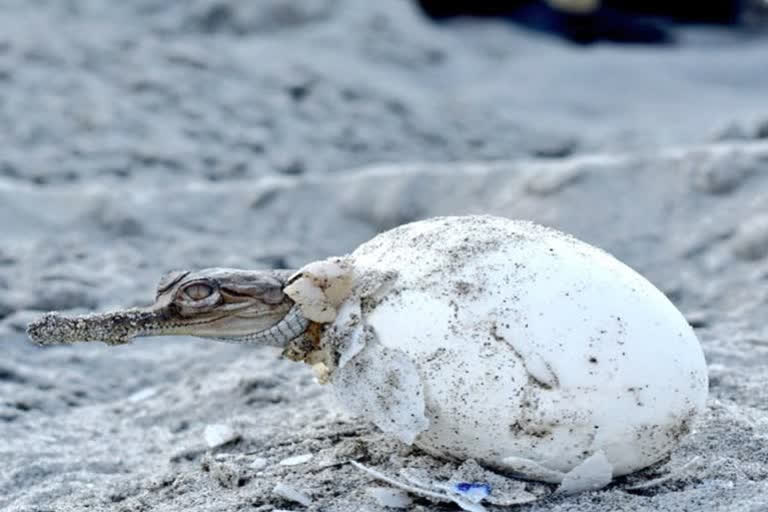Bettiah (Bihar): In the Valmiki Tiger Reserve of Bihar, the banks of the Gandak river have come alive with the sound of gharial hatchlings these days, as for the first time, a large number of gharials have been born here.
The banks of the Gandak river, which flows in the border of West Champaran district, witnessed the birth of 86 gharials this year. Since gharials, which belong to the same family as that of dinosaurs, are on the verge of extinction, the birth of such a large number of hatchlings is a welcome development.
Number of gharials sees rise in Gandak
There are currently hundreds of gharials in the Gandak River. Six years ago, a survey on revealed that only a dozen gharials remained in the Gandak River. Today however, the number has risen to 260. In view of their increasing number, the government has taken many meaningful efforts for their conservation.
Breeding period of gharials from April to June
Along with gharials, Gandak is also home to crocodiles and riverine dolphins. The breeding period of gharials starts from late March and April and continues till June. During May-June, the female digs a pit of 30 to 40 cm in the sand and lays 40 to 70 eggs. After about two months, the female removes the sand, and takes the hatchlings along with her to the river.
Farmers, fishermen being trained for conservation
In order to conserve the gharials, many people have been working at various levels. However, the biggest threat to the gharials remains the erosion of the banks of the Gandak river. Many hatchlings die in the process, and even unhatched eggs are washed away in the river due to erosion. Hence, the farmers and fishermen settled on the river are specially trained by the officials of the Wildlife Trust of India.
Read: WATCH: Tiger and Peacock face off in the land of snakes and streams
Further, they are also being trained to hatch the eggs of the gharials. The result of this training is what led to the birth of 86 gharials on the banks of the Gandak.
Preparations on to create safe sanctuary for reptiles
In view of the increasing number of crocodiles and gharials in the Narayani Gandak river, preparations are also underway to create a safe sanctuary area for the reptiles within the Valmiki Tiger Reserve by the Wildlife Trust of India and the Forest and Environment Department of the Bihar government.
System of crocodile-gharial breeding at only six spots
Throughout the world, there exist systems for the breeding of crocodiles and ghariala at only six places. The first gharial sanctuary in the country came up in Chambal, where the number of reptiles is around 1,600 to 1,800.



